"Not your fault." Cruisers losers "Variag" and "Aurora"
Probably, if today you ask any citizen of the USSR, Russia or the former Soviet republics which ships of the Russian fleet are the most famous, the most popular, then there will be two cruisers on the list: the Varyag and the Aurora.
Today we want to look from the heights of the past years not so much on the ships themselves as on the karma. If the ships have it (and there is an opinion that there is).
And, most importantly, the understanding of the feat as such. Naturally, on the basis of everything, a few words will go to advertising.
Begin.
So, the two armored cruisers, the Varyag and the Aurora, both belonged to the first-class cruisers, actually the same age as the construction time. The first is in 1901, the second is in 1903. “Varyag” is a pure-blooded American, “Aurora” is Russian.
Even according to their characteristics, they were approximately equal. Yes, the Varyag had (theoretically) greater speed and cruising range (approximately thousands of miles on the 2), but it was built to order for the Pacific Squadron. The Aurora, for the quiet execution of tasks in the Baltic “puddle”, had a mad range and was not required.
Armament difference was, "Varyag" had a bigger and more impressive in terms of guns and torpedo tubes.
But everyone can see the characteristics himself, there are no secrets here. More important than the other. And we are not talking about what the crews of the ships did in the first place, but how it is perceived today.
If the "Varyag" is perceived unequivocally as a ship-hero, then about the "Aurora" there are many often opposing opinions. Part of society is in favor of preserving the ship-museum for educating young people on heroic examples of seafarers' exploits. The other part is in favor of cutting the ship "into needles" as a part, quite a large part, of the revolution. The October Revolution, which stirred up not only Russian, but also world history, changed the structure of the world in general.
At the very beginning of perestroika, aboard the Aurora, I heard a conversation between two veterans of the fleet on Navy Day. Judging by the form, simple sailors from the past. Then I was struck by one phrase.
"This is how one shot crossed the battle path of a deserved ship" ...
How so? I knew from childhood that the Aurora was the cruiser of the revolution. I knew that the sailors from the Aurora actively participated in the revolutionary movement. Just as he knew about the hero cruiser "Varyag".
It is sad to realize this, but today most of the young people know the history of these cruisers from the “national history of Wikipedia”. At best, that is, God forbid EGE, one of the 100 thousands. Historical sources? Come on, why, when there are comments "experts" from the Internet?
And then, the whole past is generally “political”, which means uninteresting.
And just the real history of cruisers is not just interesting, but even indicative. And he says that not only the Bolsheviks were masters to lie — to embellish — to embellish and frankly to stir up from scratch.
We emphasize very boldly, this is not about the sailors of the crews and their combat work. It's about completely different things.
"Heroic death of" Varyag "..."
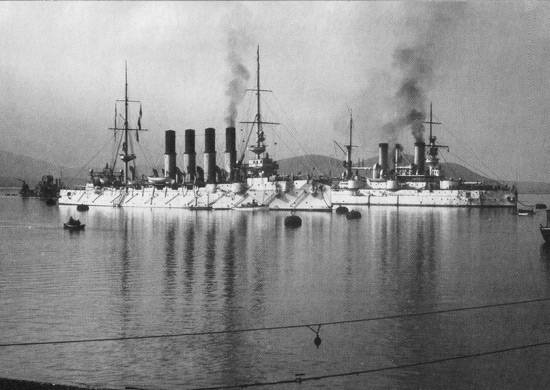
Almost everything is known about the feat of "Varyag". Especially for those who do not believe the comments "historians." For the rest, the story is already beautifully changed. And not in 1954, but much earlier.
27 January 1904, a Japanese squadron consisting of 1 armored, 5 light cruisers and 8 destroyers, blocked the Russian cruiser Varyag and Korean gunboat Korem in the Korean port of Chemulpo (now Incheon). Japanese admiral Uriu made a demand for Russian sailors to leave the port. Otherwise, the ships will be attacked right in the raid.
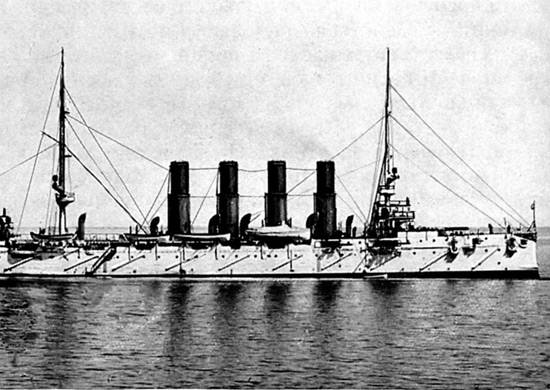
On the roads of this neutral port were “not in the works” French, American, Italian ships. In the upcoming turmoil would get to everyone, without exception, Tsushima was not there, the ability of the Japanese to shoot exactly everyone doubted.
Not that panic, but Rudnev made it clear that the Russian-Japanese showdown to all to the waterline.
To sail to the Varyag and the Koreans, it was necessary to go through a narrow 20-mile fairway under the fire of Japanese ships. This was understood, and the captain of "Varyag" Rudnev, and the Japanese admiral Uriu. This understood all the sailors and officers. Admiral Uriu issued an ultimatum about the surrender of ships. But the Russians decided to fight.
We will not describe the course of the battle every minute. This is really a fight! Only an hour of fierce shelling in both directions. Or a whole hour? Just a few quotes from the report of Rudnev. The report as a document is very controversial, it is clear that Rudnev was then largely caught in the wrong, but still:
"In 11 hours 45 minutes from the cruiser" Asama "was made the first shot from the 8-inch gun, followed by the entire squadron opened fire."
"... having done the shooting, they opened fire on the Asama from the 45 cable distance. One of the first Japanese shells, hitting the cruiser, destroyed the upper bridge, made a fire in the navigator's cabin, and killed the focus guys, and the rangefinder officer michman was killed Count Nirod and all the range finders of the station №1 (at the end of the battle one hand of Count Nyrod was found holding a range finder) "...
"... Having convinced after the cruiser was inspected that it was impossible to join the battle and not wanting to give the enemy a chance to defeat the half-destroyed cruiser, the general meeting of officers decided to sink the cruiser, bringing the wounded and the rest of the crew to foreign ships, to which the latter expressed their full consent as a result of my request." ...
Today it is not fashionable to quote Russian emperors. We will break this tradition. Moreover, we quote not a throne speech, but a toast. It was the toast that Nicholas II delivered at the gala dinner at the Winter Palace in April 1904:
"I am happy, brothers, to see you all healthy and safely returned. Many of you brought with your blood in the annals of our fleet a deed worthy of the exploits of your ancestors, grandfathers and fathers who carried them out on the Azov and Mercury; now you added a new page in the history of our fleet, added the names of Varyag and Koreans to them. They will also become immortal. I am confident that each of you will remain worthy of the award that I have given you to the end of your service. All of Russia and I read about those with love and trepidation odvigah that you have revealed a Chemulpo. I sincerely thank you, that was supported by the honor and dignity of the St. Andrew's flag Great Holy Russia. I drink to the future of our glorious victory of the fleet. To your health, my friends! "
This is the beautiful story of the feat of "Varyag". But the reaction of the officers of the imperial fleet of Russia, and of the army in general, is embarrassing. Reading their memoirs, you understand that the feat of "Varyag", from the point of view of naval officers, is rather a crime. And the actions of the cruiser commander, to put it mildly, are not professional. And frankly speaking - are criminal. And Rudnev's place is not in the gallery of honor, but in the dock.
The fact is that, according to the Maritime Regulations of the Russian Empire, the surrender of a ship or its sinking without a fight is an official crime. Recall, "Varyag" was flooded in shallow water after damage assessment. After battle. Flooded, but not blown. That allowed the Japanese to raise the ship and enter it into their own fleet as early as next year.
There are other questions for Rudnev. Why did the cruiser "Varyag" go into battle with the low-speed gun "Koreyets"? The commander of "Varyag" decided to strengthen his own artillery with cannons from the "Koreyets"? Or did it under the brand of protection of the Korean crew, which is brilliantly executed, no losses, decided not to take advantage of the cruiser in speed?
There is no answer to even more simple question. And what prevented the "Varyag" to go out to sea at night? The speed of the ship allowed it to go into the open sea and already there to give if not a serious battle to the enemy, then a full turn?
Chance, by the way, was. No matter how they criticized the American boilers, for a short time Varyag could give out not its usual 16 nodes, but the declared 24. Or the 12 node shown on the 1900 hourly tests in the 23,2 year.
Of the entire Japanese gang, only the “English” “Chiyoda” and “Asama” could oppose something in terms of speed. 20-21 node.
Yes, there were destroyers. We look at the list of weapons "Varyag" and we understand that the destroyers did not shine, if you get under fire. But this is the third question.
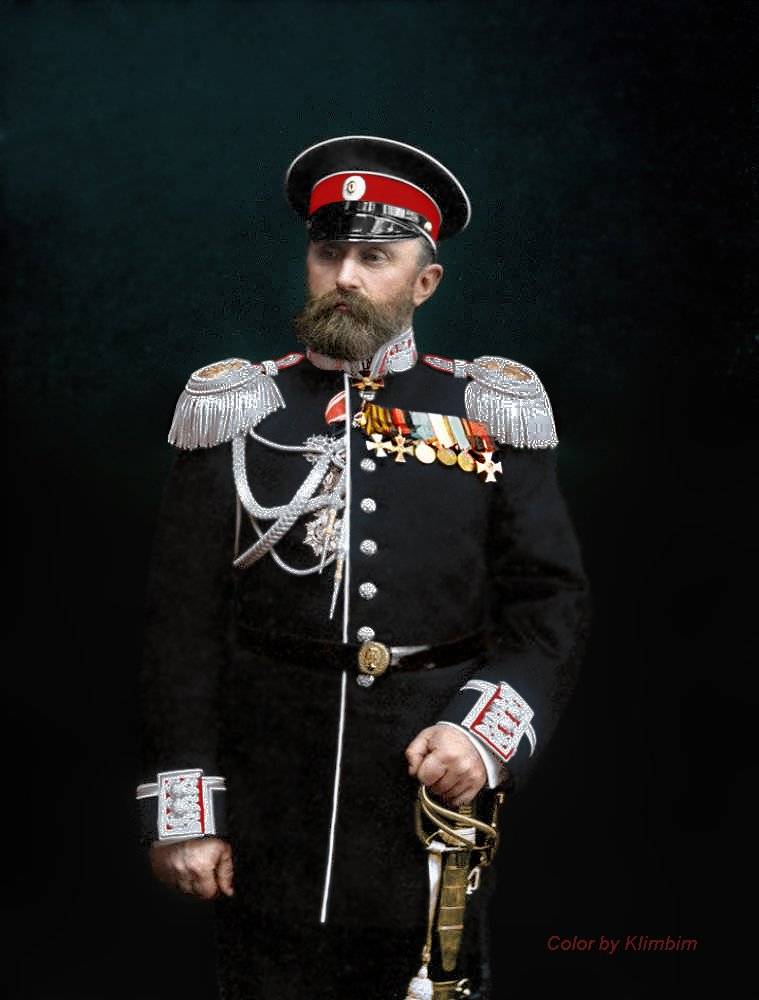
Rudnev is clearly not Ushakov. Not for nothing in the memoirs of the navigator "Varyag" Barenz mentioned the expectation of a close military tribunal for the officers of the ship to return to their homeland.
But then questions arise to Emperor Nicholas. How to toast? So what is the unprecedented award for officers and lower ranks for the Russian Empire? Never in Russia for the feat, whatever he was, not awarded twice or even three times. This is without taking into account all kinds of gifts and other honors.
Need to be reminded of the awards. All officers and civilians were awarded the Orders of St. George 4 degree. The lower ranks are awarded the insignia of the Military Order 4 degree (two 3 degrees).
Further, all participants of the battle were awarded a special medal "For the battle" Varyag "and" Koreytsa ". In addition, the officers received regular orders with swords. All the lower ranks of the emperor were given a personalized clock! And a specially released set of dishes from the royal dinner all invited pick up as a memento.
But that's not all! In the 1954 year, already in the USSR, the surviving 15 sailors from Varyag and Korey were awarded the Soviet Medal For Courage in honor of the 50 anniversary of the battle! Later, 139 veterans from the Varyag and the Korey were awarded orders and medals.
What conclusion can be drawn from the information found?
Alas, those veterans were right. The feat can be "done" far from the battlefield. It is enough to use the press, state encouragement, state resources in general. And Nicholas II did just that in 1904.
Nikolai did not succeed in the Russian-Japanese war, to put it mildly. Needed feats. And the feat of "Varyag", the feat of the lower ranks with the complete lack of professionalism of the command was specifically "promoted" in the media of that time. Moreover, he was "promoted" at the state level.
Familiar? Full
Here is how not to recall the claims against Stalin and Soviet leaders. About the "made-up" feats and so on. Who did you study? That's it ...
But even with all the power of propaganda of that time, the feat of “Varyag” and “Koreyets” negatively affected the morale of the army. It is possible, perhaps with some stretch, to talk about the first discredit of Russian orders and medals.
True, time, the best doctor, has nevertheless done its work. Today, the history of “Varyag” has been studied for the majority by the songs “Cold waves are splashing” and “Our proud Varyag does not surrender to the Enemy.” And we still perceive the feat as a sailor’s feat. The feat of the simple Russian men. ) and went into battle for superior enemy forces.
And Rudnev ... As a commander - a very ambiguous character, to be honest. Through 100 and more, his “feat” in general looks doubtful. On the verge of betrayal, to be honest.
Yes, I went to sea, I think I took the fight. Well shot at the enemy, at least. Framed the cruiser under the shells, spoiled slightly.
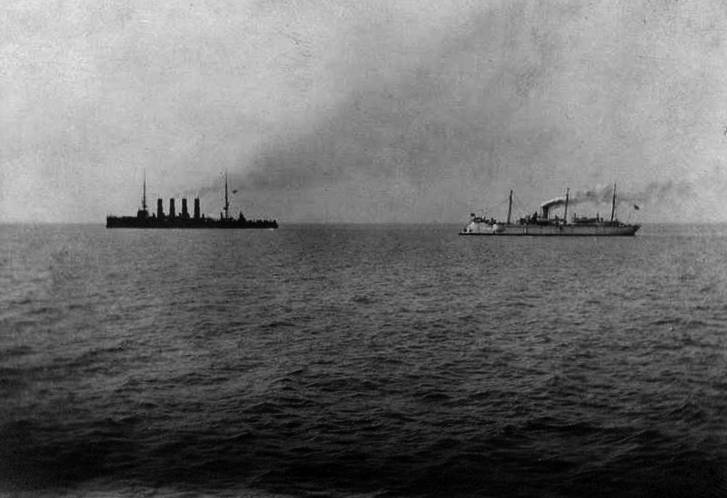
And returning, flooded. He did not blow up the cellars, so that the enemy wouldn’t get it exactly, as in the case of the Korean, but quietly flooded in shallow water.
Probably, it was easier to raise later. We do not specify to whom, although they were Japanese.
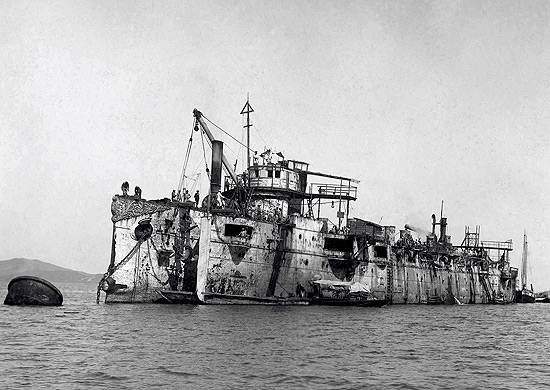
By the way, you can also talk about the Order of the Rising Sun. For what? An hour of courage? Or for "cruising" the cruiser?
Here it is worth remembering that in the ever-memorable 1905 year, “Varyag” was not only that the Japanese were raised, exactly one and a half years later, the 8 of August was also put into operation. In 1907 year.
And until the sale back to Russia under the name "Soy" from 1907 to April 1916, he successfully and decently trained Japanese seamen in marine business.
The Japanese mister Rudnev accepted the order ... He did not wear it, but he accepted it ...
Of course, it could be worse. For the ship, I mean. As "Poltava" and "Admiral Ushakov" it was possible to shoot the Chinese main caliber. But carried, as it is.
If in general - the hour of battle and eternal glory. "And the waves of the sea will glorify the heroic death of the" Varyag "for centuries ...".
Well, not very (which, not at all) heroic, and even more so, the further service of the ship and even more. Sailors and others (except Rudnev)? Yes of course. In an hour of battle, then glory is more than enough.
Plus, then, at the beginning of the First World War, full-fledged gold was paid for the “heroically dead” ships, so necessary for Russia for a new war.
The worse were the sailors and commanders from the "Admiral Ushakov", "Pearls", "Oleg" - the question.
But the fact is that we are dealing with ordinary PR. We needed heroes, anyway. The war was actually lost. You can argue, but alas, difficult. That, in fact, rushed. You can say a lot about the fact that the Bolsheviks in 1941 invented heroes, in 1904 the monarchists were no better.
“What do you dream about, cruiser Aurora?”
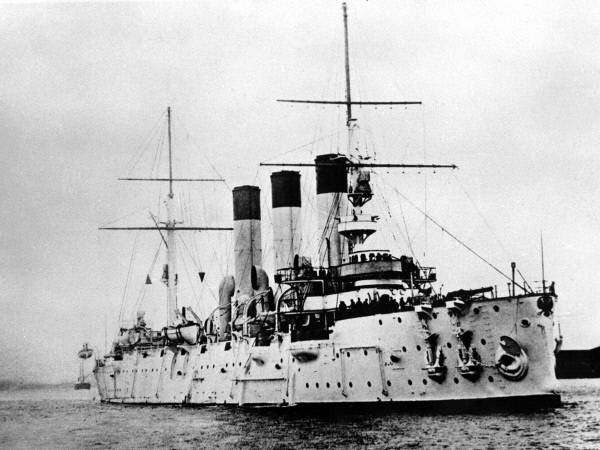
And what about the cruiser of the revolution? After all, "Aurora" also participated in the Russian-Japanese war. Moreover, it was for this that the heroic transition to the Far East from St. Petersburg could be accomplished for this, but ... This cruiser was clearly intended for another and not just "cruising" in the Indian and Pacific Oceans.
So, the commander of the cruiser, Captain First Rank Yevgeny Romanovich Egorev. Commanded to the "Aurora" four ships. All ships were great. Specialist precisely in the eastern seas and the Pacific Ocean.
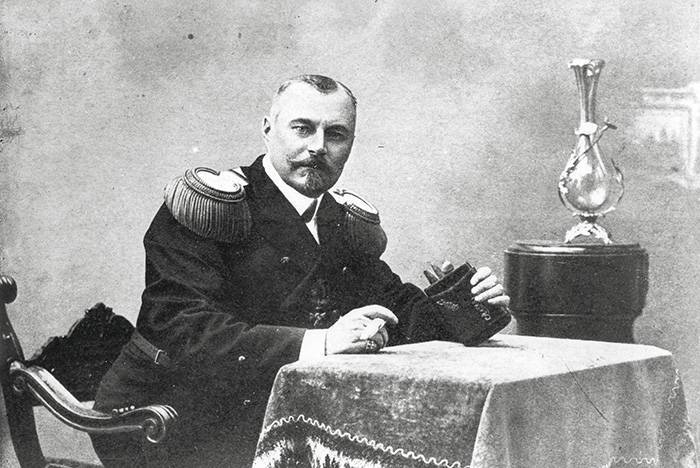
The ship was enlisted in the squadron of Rear Admiral Z. Rozhenstvensky. In September, 1904 was sent to rescue Russian troops in Port Arthur. What the Aurora crew did during the transition is still admirable. The ship in the field of coal loading invariably took on board a double rate. 1300 tons! And into the ocean ...
Do not climb into the memoirs, but believe me, there are only memories of crew coherence and good fighting spirit. It is clear that they could then rewrite it, but ... On the conscience of those who wrote.
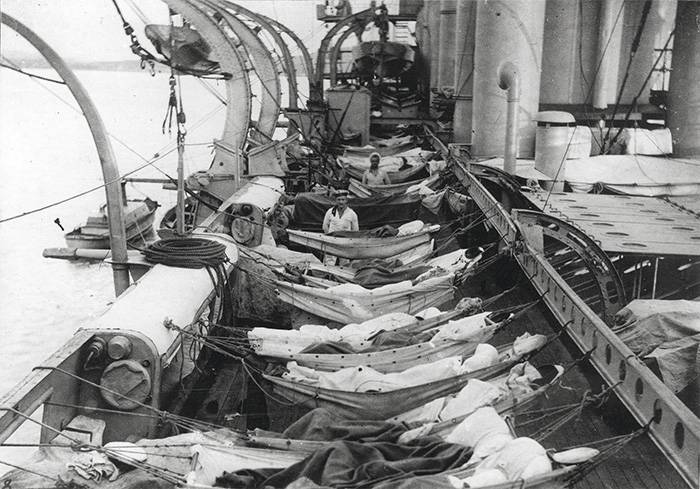
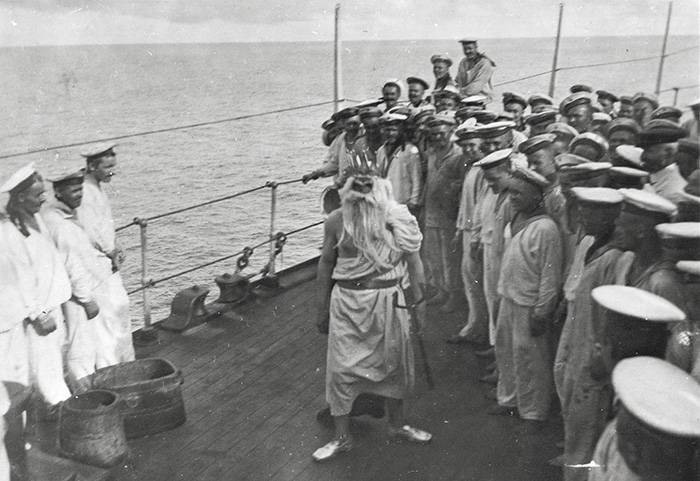
At Tsushima squadron met with the Japanese. The squadron was defeated. Everyone knows that. And what about "Aurora"? And Aurora was 6-hour battle. Protection of transports. 6 hours of fights with the enemy. And not just the enemy, there really was enough above the roof. Detachments of cruisers Virgo, Uriu (who had already tasted the victory over the "Varyag") and Togo Jr. 6 hours of continuous shelling.
The captain of the first rank Yegoryev was killed. Killed 14 sailors. Wounded 83 person. But the ship lived and fought.
For comparison, the losses on the Varyag were more substantial: 1 officer and 30 sailors were killed, 6 officers and 85 sailors were wounded and shell-shocked, and about 100 people were slightly injured.
The famous photo, which was presented with respect to the relatives of Yegoryev, the crew of the cruiser. The frame of the charred boards of the deck, the mat of the sheathing, torn by a projectile.
If this is not a manifestation of the team’s highest respect for their commander, then we don’t even know what to count as respect.
It is possible that Rear-Admiral Enquist, the commander of the Russian cruisers detachment, was “guilty” of the lesser losses of the Russian seamen, who “had to perform difficult maneuvering in order to change the distance to the enemy as often as possible and not let him shoot him.
And then there were the Philippines, where the "on the teeth" team dragged their pretty battered ship.
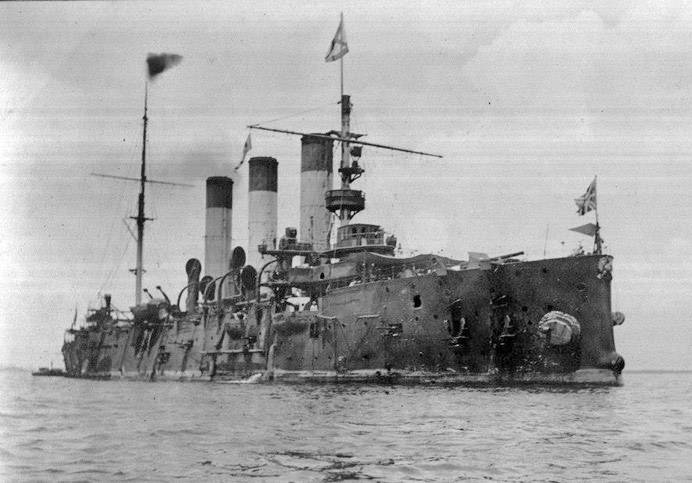
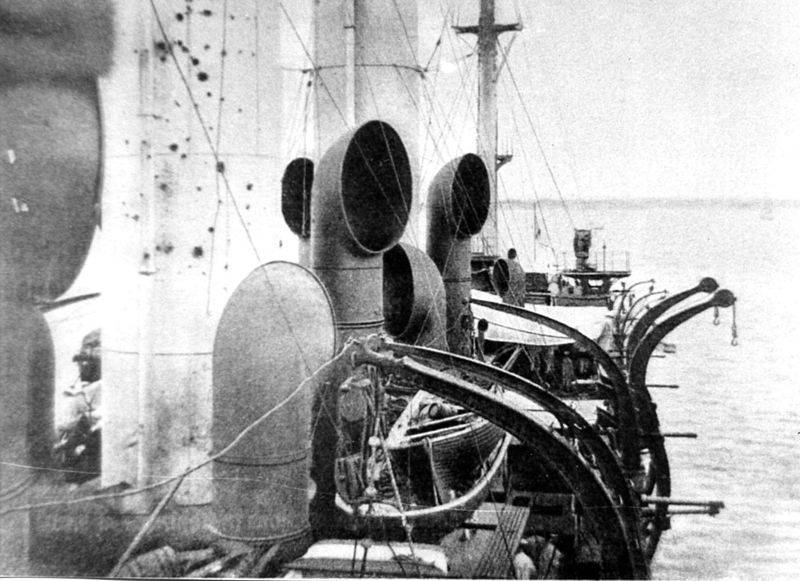
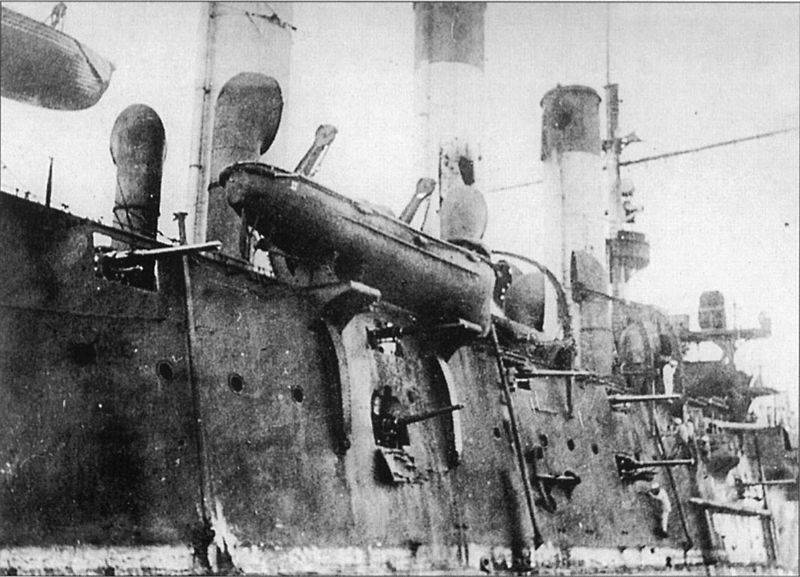
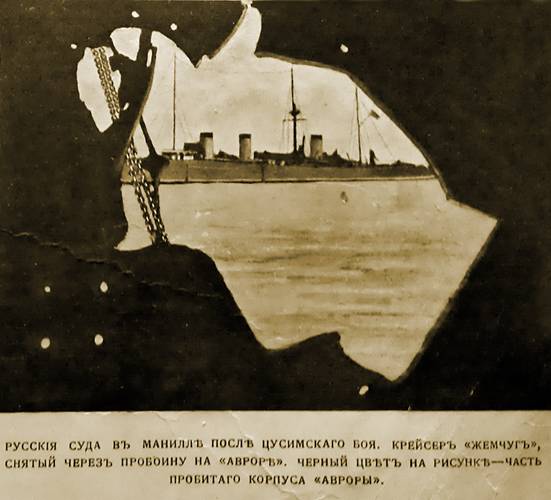
On the Philippine Islands, the Aurora, along with other ships (the Oleg and Zhemchug) was interned at the request of the US government and with the personal permission of Nicholas II. There the ship met the end of the war and the signing of the Portsmouth Treaty. During the internment, the crew healed the wounds, both their own and the ship. October 10 1905, the Aurora headed for Russia.
Yes, the ship is already outdated by the First World War. Yes, he did not possess firepower. He did not have the speed. But, paradox, he fought. As part of the Baltic Fleet's cruiser brigade 2, the Aurora carried out patrol service, laid mines, covered patrols, destroyed enemy airplanes, covered minesweepers. The ship was in combat service.
By the fall of 1916, the ship was thoroughly “worn out” and stopped for repairs. That is why the crew of the cruiser and took an active part in the February revolution. Actually, it is not necessary to say that a crew that is not busy with business is not the best in itself.
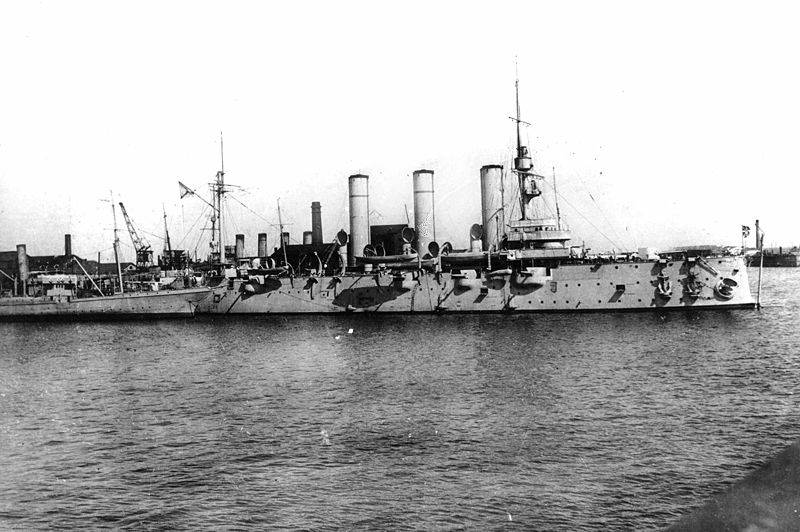
At this time, something happened that is little talked about in modern history. The cruiser commander, captain of the first rank Nikolsky and the senior officer of the cruiser Ogranovich, restoring order on the deck, opened fire from the revolvers at the sailors. Two people were injured easily, one mortally.
Nikolsky and Ogranovich paid dearly for it. They were killed by sailors for refusing to carry a red flag. Nikolsky - a shot to the head, Ogranovich - a blow of the bayonet in the throat.
So, actually, the crew of the cruiser also became “red”, subsequently taking part in rallies and other events of the Bolsheviks.
Well, actually, the “same” single shot of 25 October 1917 of the year ... As a result.
It is difficult to say how the fate of the Aurora would have been. The cruiser, which was already obsolete in World War I, by the end of the 30-s, having made several long trips as a training ship, became simply unsuitable for operation. It was decided to write off the ship and assign its name to the new cruiser. But ... war prevented.
"Aurora" became the floating base of the submarines of the Baltic Fleet. The guns from the cruiser removed. It was these 130-mm guns that became the famous batteries, which stood between the village of Mozhaisk (Dudergof) and Kiev highway. Battery "A" - "Aurora". 12 kilometers of fascist death. And sailor, too. Almost none of this battery survived.
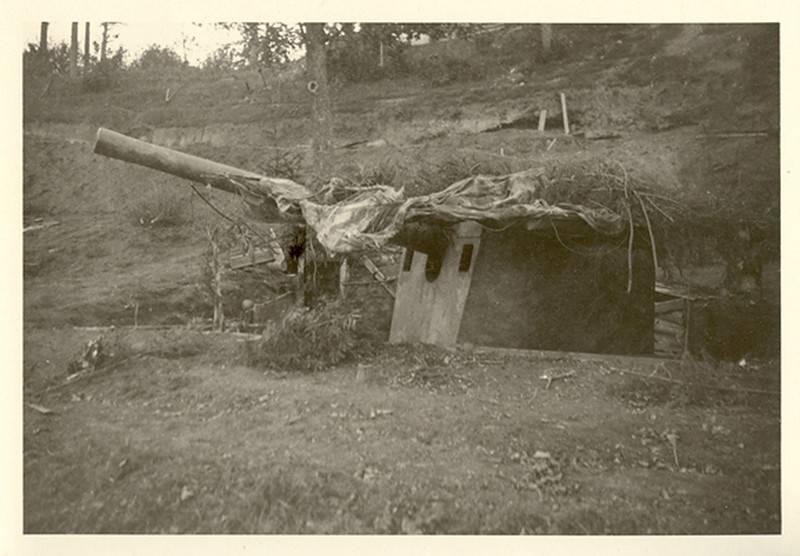
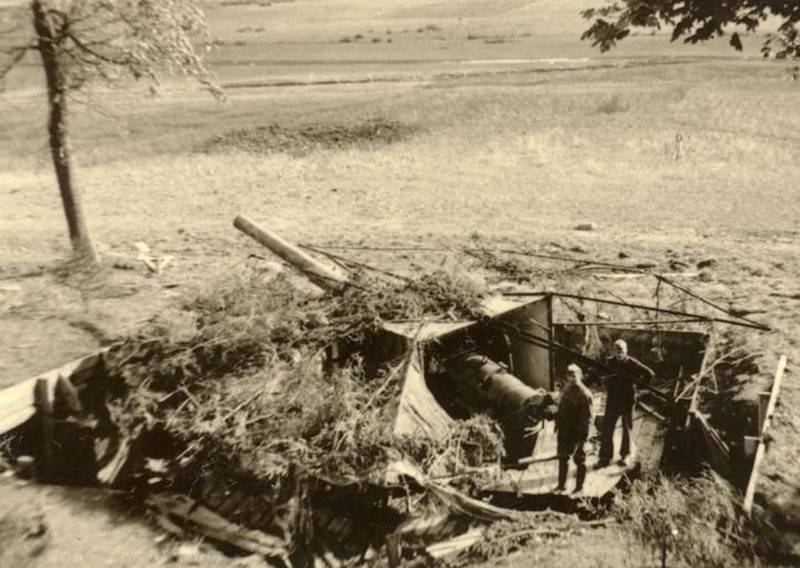
By the way, some of the readers remember about the rarity of the defense of Leningrad, the armored train Baltiets. The main weapon of the armored train, the 130-mm gun, was also from the Aurora! And the ships of the Peipsi military flotilla were mostly armed with small-caliber Auror guns.
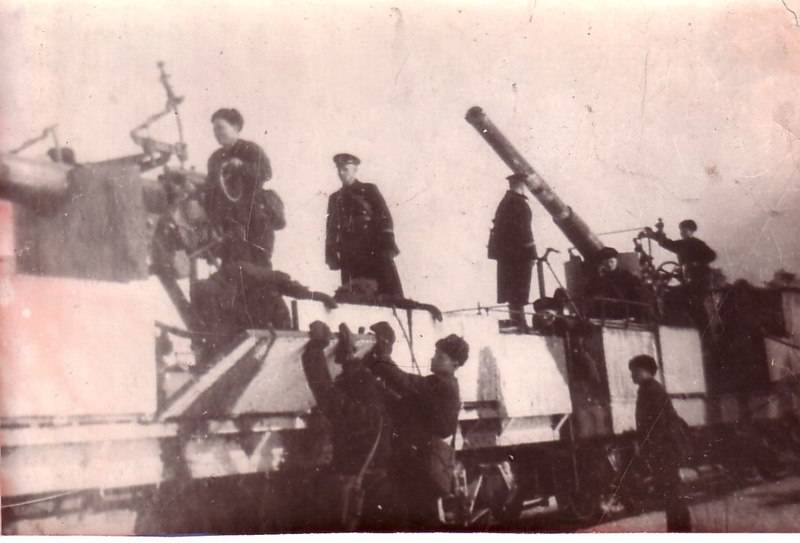
But the cruiser, even without basic weapons, fought. In the city of Lomonosov (Oranienbaum), eyewitness accounts of the actions of the Aurora sailors against the German aviation. And about the downed planes. It was in Oranienbaum that the cruiser received "mortal" wounds. The hull of the ship was pierced in many places with bombs and shells. There was a danger of turning over to the starboard side (the roll reached 23 degrees).
The crew of the ship turned the ship into a fortress, opening the Kingston on the port side and landing the cruiser on the ground on an even keel. And in this position the ship continued to fight until September 1944, and only then was transferred for repairs to Leningrad.
True, again, not lucky captain. Seeing the senselessness of the crew’s continued stay aboard the ship, the captain of the 3 rank Sakov, with his power, placed the sailors in a safe place on the shore, leaving a permanent watch on the Aurora against anti-aircraft guns. For this, the cruiser commander was arrested and soon shot on charges of "panicking" and "fleeing from the ship."
It is clear that such stories happened and will happen a lot during the war. But a simple question arises. Why does no one tell young people about the history of the Aurora after the “historical shot”?
The cruiser hero "Varyag", which is forbidden to touch someone and sometime. And the “cruiser of the revolution” “Aurora”, to whom a place in the dustbin of history, as some ...
The cruiser, which in its combat life really fought for about an hour, and the cruiser, who fought three (!) Wars. Did not participate in the war, namely, he fought!
And here the question arises: who are the heroes? Who should we exalt and set as an example?
No, it is clear that "the waves of the sea will glorify the heroic death of the" Varyag "for centuries ...". Or maybe all the same people? Moreover, the heroic death of a very Krivoruk executed cruiser flooding can only be called a very stubborn propagandist.
People. There are no complaints about the sailors of "Varyag". But since we are talking about people, what can you say about the sailors "Aurora"? Those that fought at Tsushima. Those who fought in the First World War on the Baltic. Those who were in the Great Patriotic War, having fired the last shell, took a rifle in their hands, because the Germans had already broken into the position of the battery.
But those sailors, veterans might well be right. Sometime there must come a time when you have to prove the opposite. And not on written scripts, but on human affairs. Maybe? Full
Today, the value of that idle shot no longer seems to be something epochal. If it’s really serious, yes, the shot was more likely a political thing for which you can be praised, but ...
But there were hundreds of other shots. Under Tsushima, in the Moonsund Archipelago, near Leningrad and in the Leningrad sky, stained with black crosses of airplanes. And the lives of sailors, burnt in the fire of three wars.
What is more valuable? What you need to remember? And what will we remember?
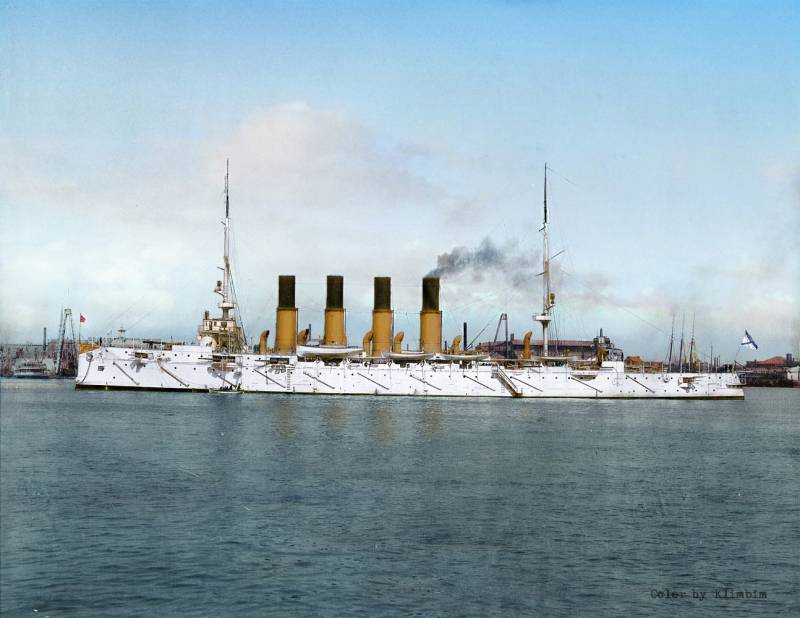
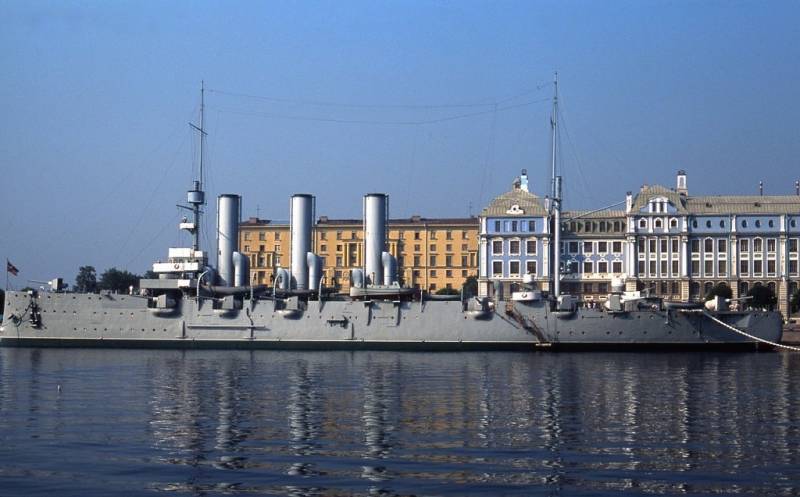
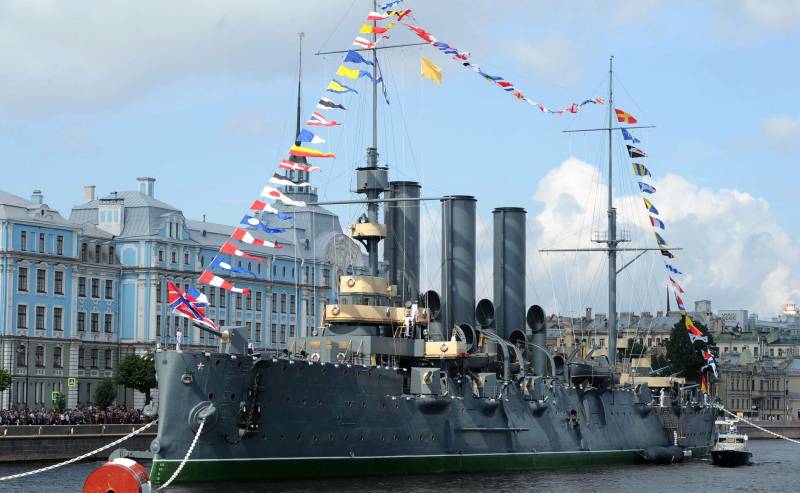
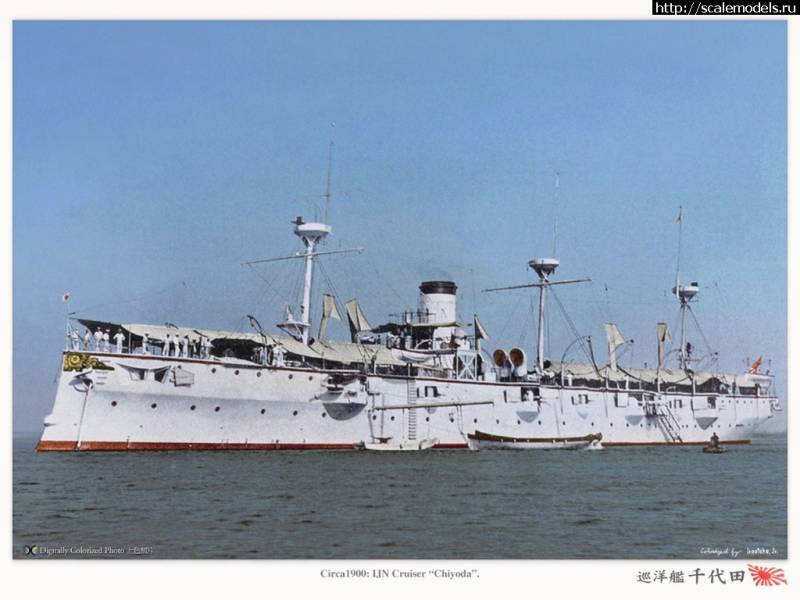
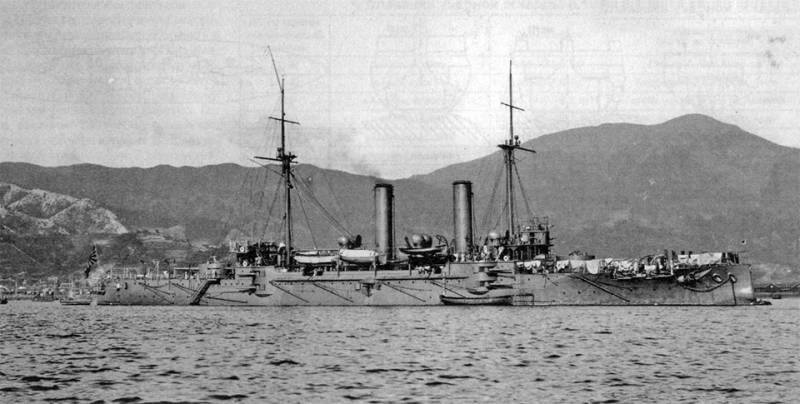
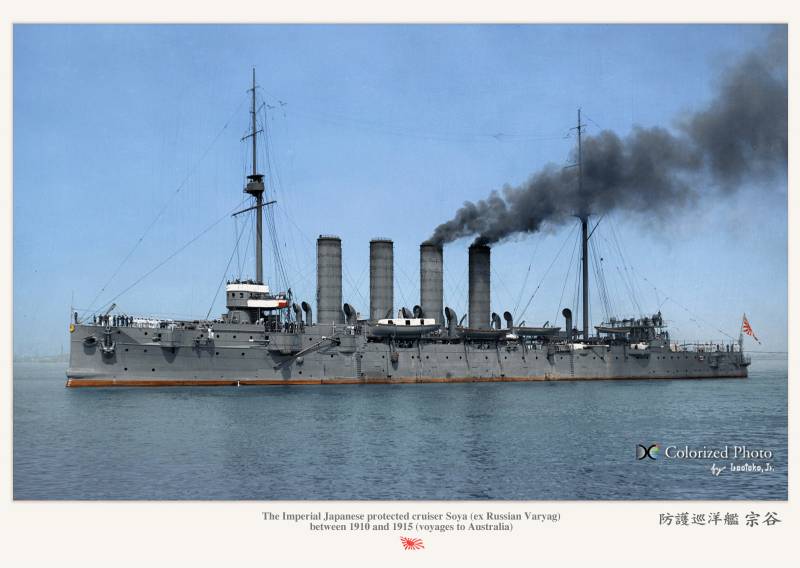
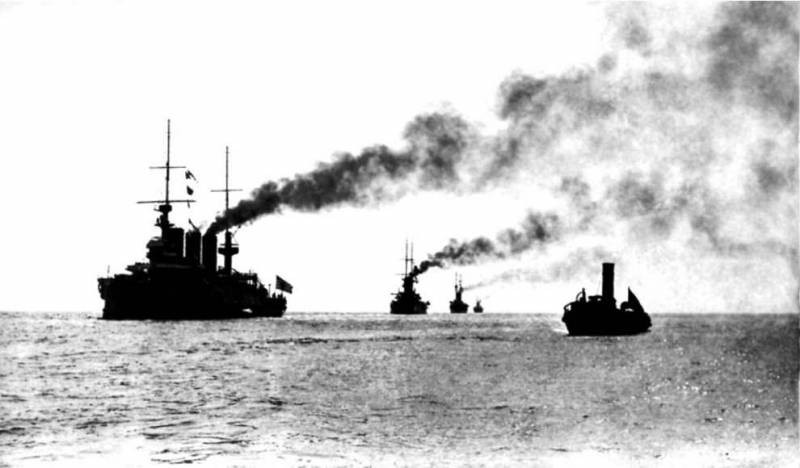
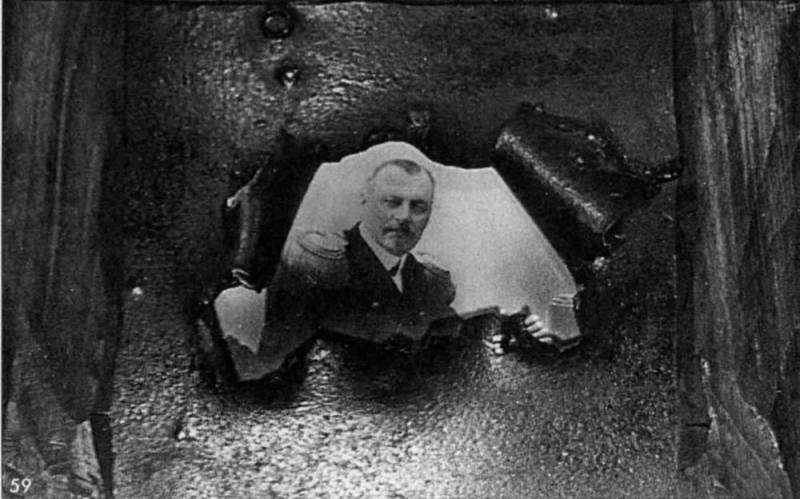
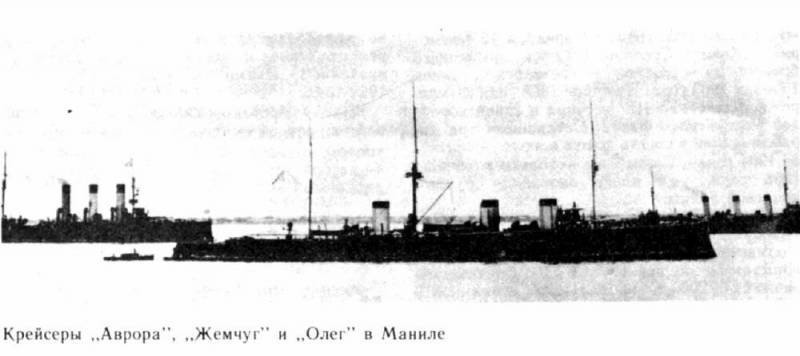
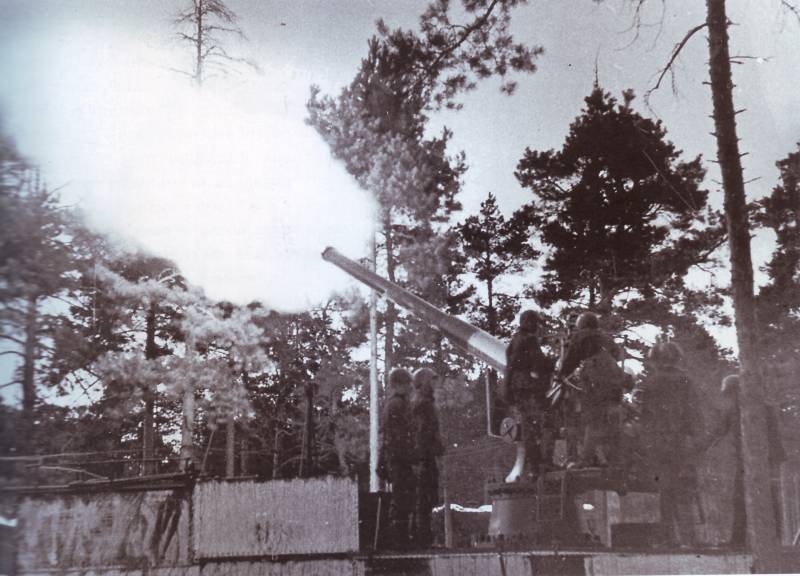
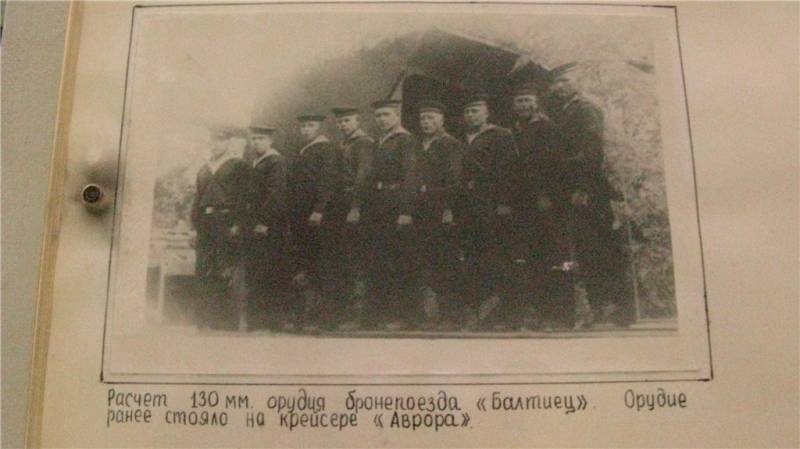
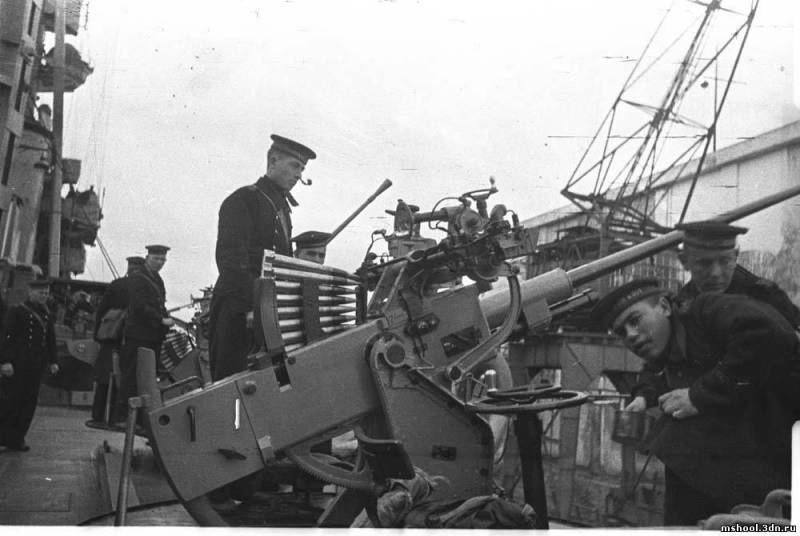
Information